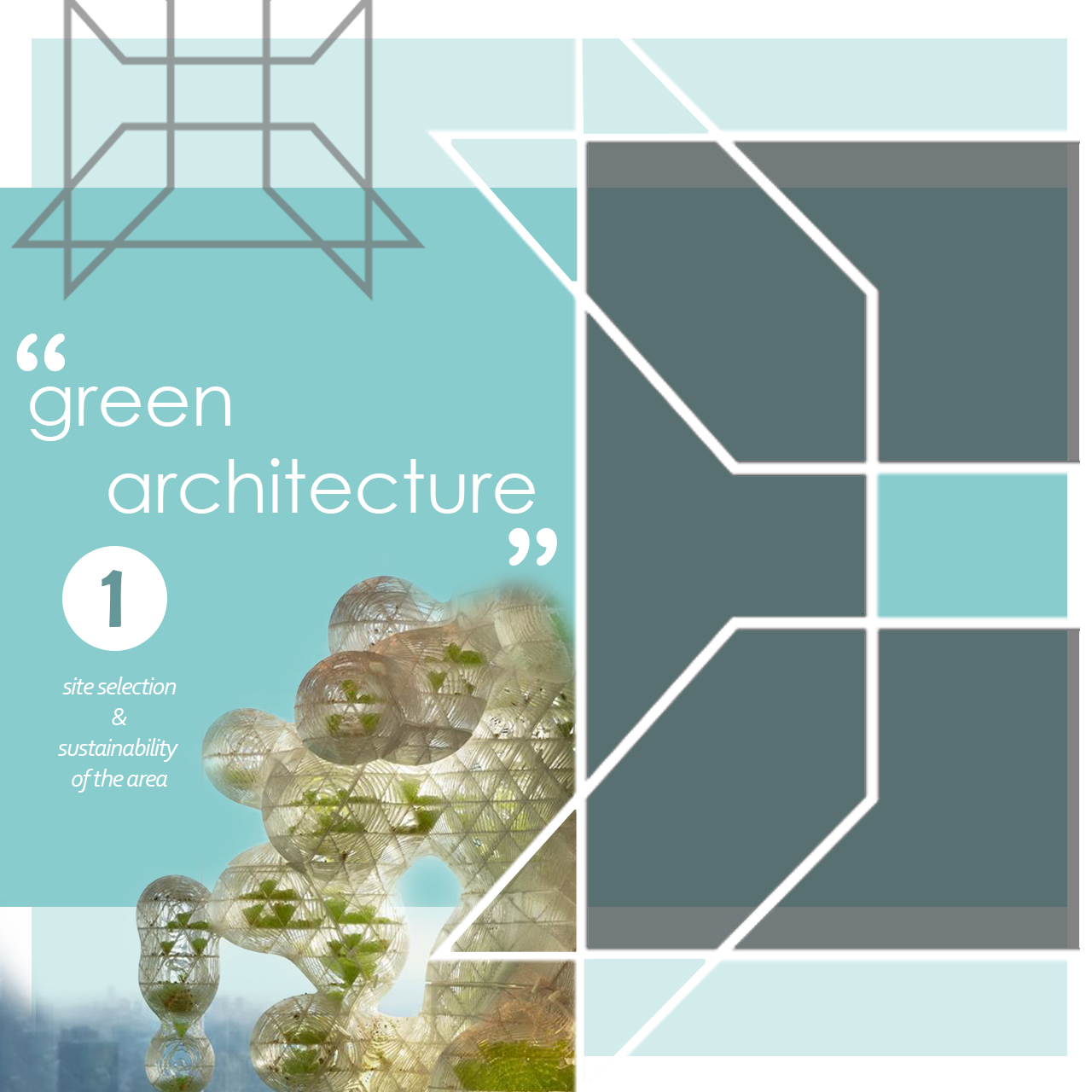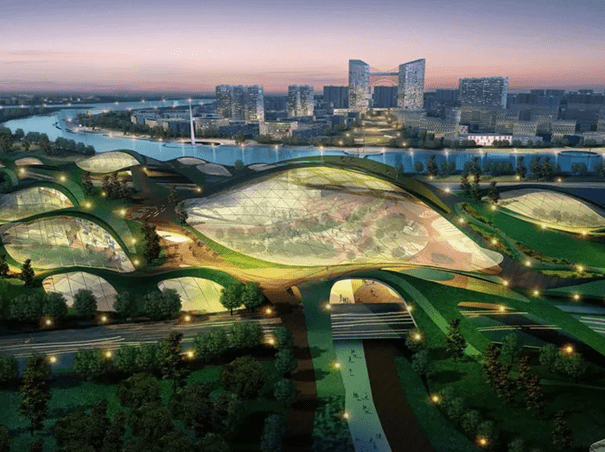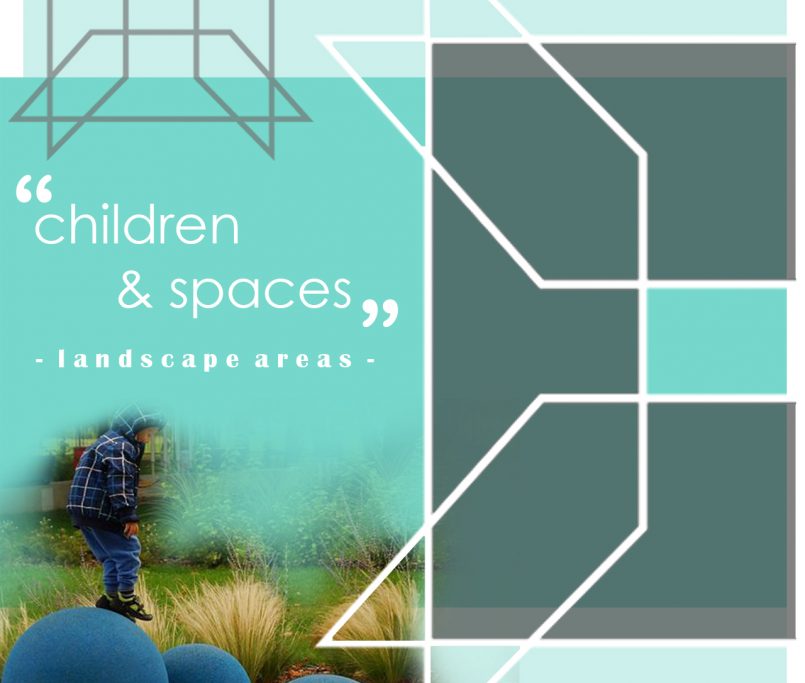Green Architecture- Site Selection & Site Sustainability
LAND SELECTION
If we are going to build a structure in this world, first of all, we need to identify a suitable location for it. So, what should we pay attention to?
1-) Conservation of Valuable Lands
Farmland, wetlands, and water-side areas such as lakes, rivers, and seas that have not previously been developed should be protected from construction. In addition, if the area serves as a habitat for certain species, especially those in danger, or if there are trees in the area, other parcels of land should be considered instead. Priority should be given to the use of previously developed or abandoned areas.
2-) Location and transportation
Building or renovating should take place in developed areas. This way, existing urban facilities and infrastructure will be utilized, and the conservation of the environment in undeveloped areas will be ensured.
The building should be easily accessible, and there should be commercial, social, and green areas that people need nearby. In choosing the location, it is advantageous to be in central areas with public transportation, walking, and cycling as environmentally friendly transportation alternatives. Providing special areas in parking lots for bicycle parking, environmentally friendly vehicles, and carpooling will create awareness among people and encourage the use of these alternatives.
Sustainability of the Area
You have chosen the right land for you with an environmentally friendly approach. Man-made construction will be done here, it could be a building or even a park. It should be known that after this process, that area will not be the same as before. Creatures living under or above the ground will be affected, and perhaps some will lose their habitat. The rain falling on that area will not be able to mix with the soil, it will flow from hard floors and collect in the city sewer lines, and as the construction increases, the underground waters in that area will disappear and the soil quality will change.
Considering all these, first of all, an area analysis should be done in response to the questions of how this construction activity can be carried out with the least damage and how decisions should be made for sustainability. Information should be collected about the climate, land topography, geological and hydrological condition, vegetative structure, advantages and disadvantages.
Let’s talk briefly about what can be done for the sustainability of the area.
1-) Land use
In sustainable land use, it is logical to utilize or develop existing resources while preserving natural areas, in other words, to cause the least possible disturbance to the environment. One of the simple but effective decisions that can be made to protect the environment is to minimize the building footprint and allocate ample space for green areas.
2-) Rainwater Harvesting
In many cities and small settlements in our country, there are still no rainwater pipelines. Rainwater collected from building roofs, roads, and sidewalks flows into the sewer system. Even if there were a rainwater pipeline in the area and the collected rainwater was transferred to a natural water source such as a stream, river, or lake, we see that this still does not contribute to the environment when we think about it in detail. This is because the dirty substances – especially chemicals – in the hard surfaces and surfaces we mentioned are collected together with rainwater, polluting the water sources. Therefore, we need to control rainwater in terms of quantity and quality. The use of “permeable materials” that allow rainwater to reach the soil on the surfaces of outdoor areas such as roads and squares is a good solution, and grass paving is a good example of this. Rainwater that flows from impermeable surfaces and roofs can be collected, filtered, and reintroduced into the environment through landscaping arrangements such as rain gardens and bioretention areas.
3-) Reducing the heat island effect
As urban development continues, green areas are decreasing, and the use of materials in buildings and public spaces is causing an increase in heat in densely populated areas. The temperature difference between central and peripheral areas in cities can reach up to 5°C. In addition to increasing green areas and trees, using reflective and light-colored materials in areas such as parking lots, roofs, walkways, squares, etc., will distribute sunlight and reduce the heat island effect.
4-) Reducing light pollution
Many living organisms are negatively affected by excessive light. Light disturbs resting animals at night and disrupts their day-night perception and biological rhythms. Therefore, light should only be used as much as needed. If indoor lighting affects the outside environment, the lighting level should be reduced between 11 p.m. and 5 a.m., and outdoor lighting should be kept to a minimum.
To prevent light pollution, organizations such as the “International Dark-Sky Association” and the “Dark Sky Preservation Society” work to protect the starry sky.




